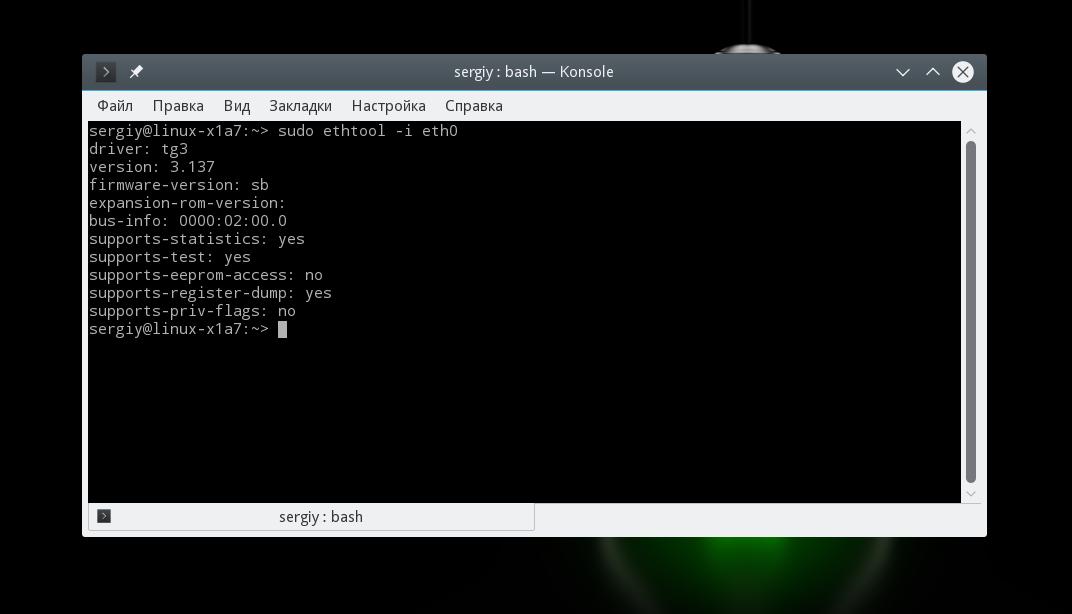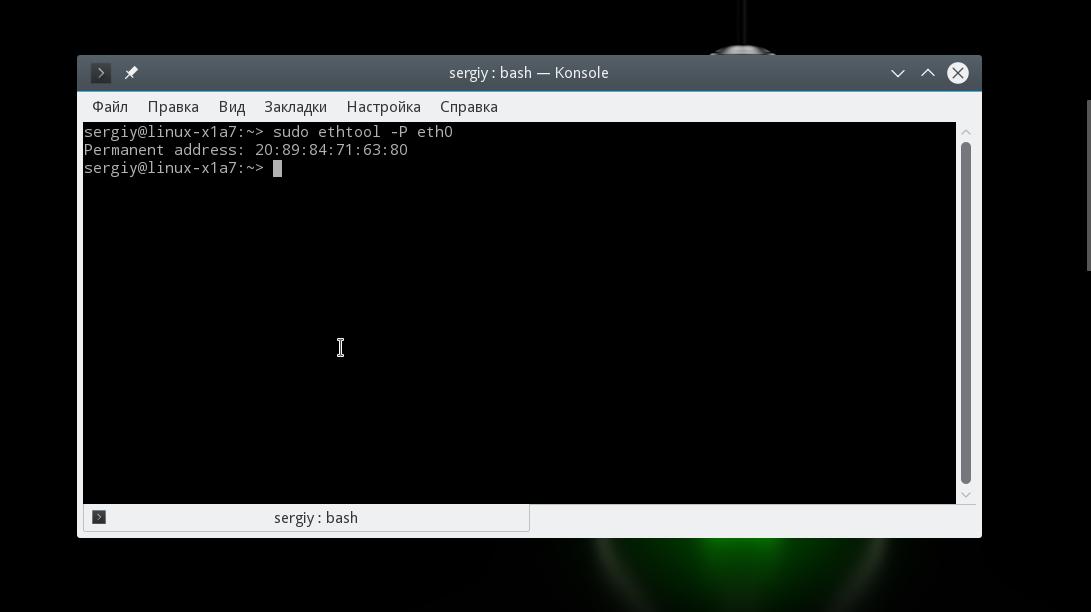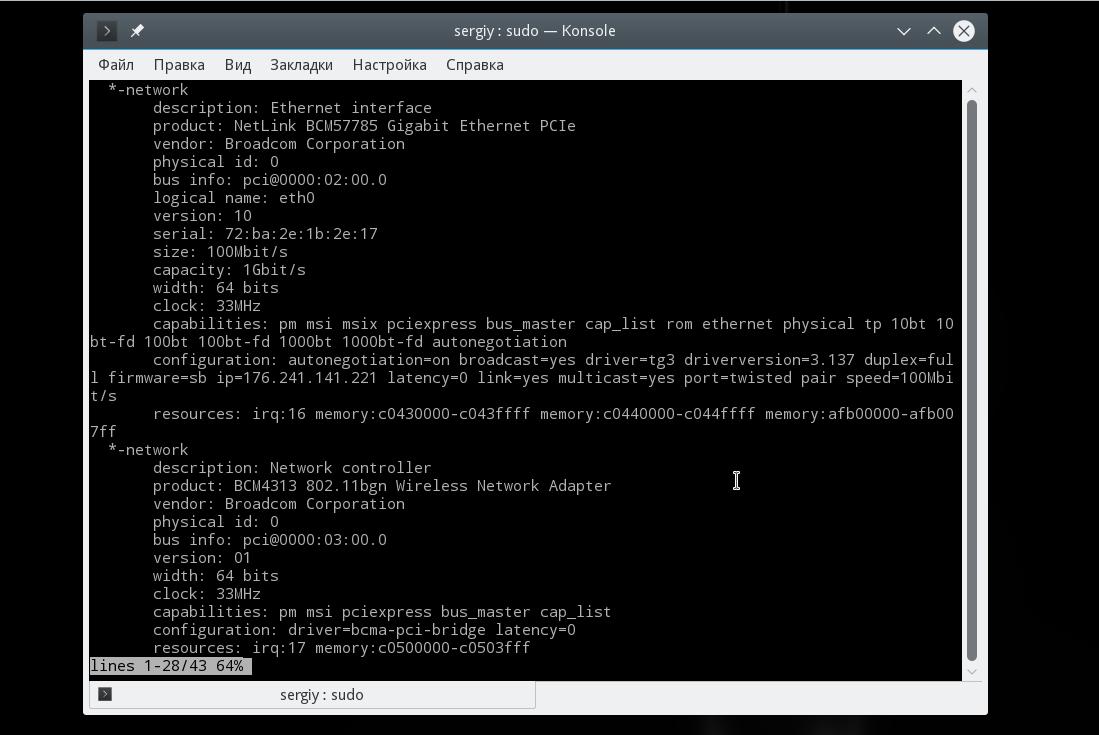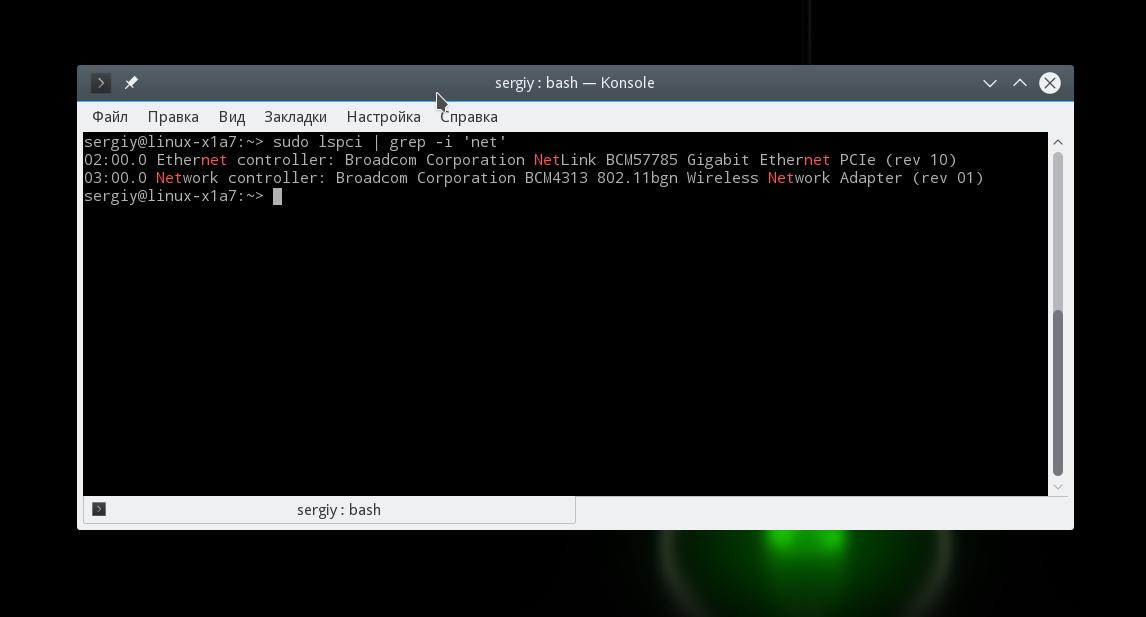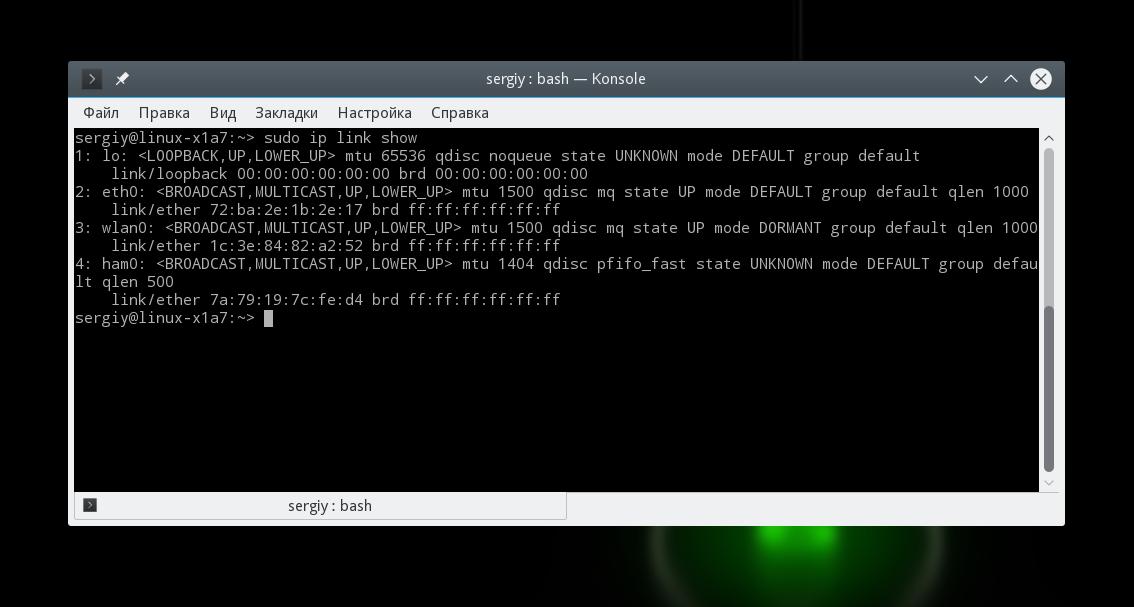Get Wi-Fi interface device names
Similar to a previous question about finding network device names, I would like to get a (reliable) list of device names but just for Wi-Fi devices. So that it looks like the following depending on your naming structure:
9 Answers 9
With nmcli you could list all devices and their type e.g.
nmcli --get-values GENERAL.DEVICE,GENERAL.TYPE device show
eno1 ethernet wlp1s0 wifi wlp1s1 wifi p2p-dev-wlp1s0 wifi-p2p lo loopback Per the manual, when using -g, —get-values , the «output is terse. This mode is designed and suitable for computer (script) processing». So you can pipe that output to other tools and get the wifi devices names e.g.
On linux you also have iw (show/manipulate wireless devices and their configuration) and when used with the dev command:
Commands: dev List all network interfaces for wireless hardware. phy#0 Interface wlan0 ifindex 3 wdev 0x1 addr 00:12:32:e4:18:24 type managed phy#1 Interface wlan1 ifindex 4 wdev 0x2 addr 00:12:22:c6:b2:0a type managed To extract only interfaces names you could process the output e.g.
just keep in mind the help page clearly states:
Do NOT screenscrape this tool, we don't consider its output stable. I like this answer, it solves the problem, but the bit about not scraping concerns me and makes me think there may be a better way. I’d like to leave this open for now.
The ‘Do NOT screenscrape’ comment only seems to appear when help is shown, due to invalid input or an explicit help command, but not in the output of valid results.
Just a reminder that you may need to run this as root i.e. sudo iw dev , because running it as a non-privileged user may return no results.
On Ubuntu at least, there is the /proc/net/wireless file that contains details about the Wi-Fi interfaces. Which outputs for me:
$ cat /proc/net/wireless Inter-| sta-| Quality | Discarded packets | Missed | WE face | tus | link level noise | nwid crypt frag retry misc | beacon | 22 wlp5s0: 0000 36. -74. -256 0 0 0 16 33004 0 It’s a little messy but the device name is in there.
To get just the interface name:
cat /proc/net/wireless | perl -ne '/(\w+):/ && print $1' The perl code prints the string of word characters preceding the colon.
Universal way (non root) tested on Android 4, Android 7.1 and Android 9 and ArchLinux.
ls /sys/class/ieee80211/*/device/net/ Great answer. To dump only relevant info, ls /sys/class/ieee80211/*/device/net/* -d | sed -E ‘s|^.*(phy[^/]+)/.*/|\1 |’
If you have sysfs mounted at /sys then the following commands work:
$ find /sys/class/net -follow -maxdepth 2 -name wireless | cut -d / -f 5 wlan0 $ find /sys/class/net -follow -maxdepth 2 -name phy80211 | cut -d / -f 5 wlan0 for dev in `ls /sys/class/net`; do [ -d "/sys/class/net/$dev/wireless" ] && echo "$dev" done The first finds all devices in /sys/class/net with a wireless directory (which may be more than just WiFi devices) and the second finds devices that are 802.11 compatible
Even though sysfs probably has sane file names, parsing the output of ls is bad practice and a common pit fall in bash.
I like the find solution too; it only finds files that actually exist which solves the awkward * that other solutions here get. I found that I needed a slightly different set of parameters to reduce the amount of noise cause by file system loops. The following works nicely for me, but does spawn an extra subshell for cut and relies on assumptions about indexes: find -H /sys/class/net/* -name wireless | cut -d / -f 5 Furthermore I needed an additional | head -n1 for my particular use-case.
Building on Josh’s answer, I’ll use a shell glob to identify the /sys/class/net directories with a wireless directory inside, and cut to grab the device name:
# find the directories $ printf '%s\n' /sys/class/net/*/wireless # substitute with phy80211 if desired /sys/class/net/wlp4s0/wireless # filter out the "device" part $ printf '%s\n' /sys/class/net/*/wireless | cut -d/ -f5 wlp4s0 Note that this will still print * if no wireless device exists, instead of an empty result. Instead, try this with only POSIX shell built-ins: printf ‘%s\n’ /sys/class/net/*/wireless | while IFS=’/’ read -r -a p;do [ -e «/sys/class/net/$» ] && echo «$»;done .
@Yeti posix-sh doesn’t have arrays though? As for printing the glob versus an empty result, I think (at least for some shells) that depends on nullglob.
Why not just filter the unwanted * out: printf ‘%s\n’ /sys/class/net/*/wirelessREMOVETHIS | cut -d / -f 5 | grep -v ‘*’
@StephanHenningsen good use of cut instead of awk, edited. I’m not convinced on the * part though; I really think it depends on what you’re doing, what the shell options are, and whether or not your device might have an asterisk in it (shudders)
Here’s a simple and very effective loop that answers the question:
for dev in /sys/class/net/*; do [ -e "$dev"/wireless ] && echo $ done This one picks the first wireless interface and stores it in $iwdev , which was what I needed:
for dev in /sys/class/net/*; do if [ -e "$dev"/wireless ]; then iwdev=$; break; fi done It’s a rewrite of Josh’s answer which I found nice and simple. The above approach handles spaces and other oddities in file names. It also doesn’t make too many assumptions about file paths being sane and relies on a minimum of slashes and indexing. Finally it uses built-in parameter expansion for extracting the base device name instead of spawning a subshell for cut or awk .
Как узнать сетевую карту в Linux
Иногда нужно посмотреть сетевые карты в Linux, подключенные к компьютеру, узнать имя продукта или технические характеристики карты, а также скорость передачи данных. Например, когда вы хотите проверить совместимость сетевого драйвера или модуля ядра с Ethernet адаптером необходимо знать его аппаратные спецификации, такие как: номер модели и производитель, (например: Broadcom NetXtreme, Intel I350), скорость (например: (1 Гбит/сек, 10 Гбит/сек), режим соединения (full/half duplex) и т д.
Также эта информация вам понадобится, если вы хотите подобрать драйвер для своего wifi адаптера. В этой инструкции я расскажу как узнать сетевую карту Linux и посмотреть все доступные ее характеристики.
Информация о сетевой карте с помощью Ethtool
Если вас интересует информация о проводной сетевой карте Ehternet, то вы можете воспользоваться утилитой Ethtool. Это инструмент командной строки для проверки и изменения настроек PCI Ethernet карт. Для установки Ethtool в Ubuntu или Debian используйте команду:
В других дистрибутивах установка производится аналогичным образом, только нужно использовать подходящий пакетный менеджер.
Для отображения настроек сетевой карты в ethtool запустите утилиту передав в параметрах имя сетевого адаптера. Права суперпользователя здесь нужны для того, чтобы утилита могла получить информацию о настройках локальной сети и статусе соединения.
Здесь вы можете посмотреть поддерживаемые режимы работы Supported link modes, скорость Speed и тип коннектора Port, а также состояние подключения. Для просмотра информации о сетевом драйвере и прошивке используйте опцию i:
Здесь вы можете видеть какие режимы поддерживает прошивка, а также ее версию. Если вас интересует MAC адрес выполните:
Информация о сетевой карте в lshw
Во втором способе мы воспользуемся утилитой для отображения подробной информации об аппаратуре Linux — lshw. С помощью нее вы можете посмотреть информацию не только о карте Ethernet, но и о Wifi адаптере, а также посмотреть список сетевых карт.
Для установки lshw на Ubuntu или Debian наберите:
Чтобы посмотреть узнать сетевую карту linux и просмотреть подробные сведения о ней, запустите утилиту со следующими параметрами:
В выводе команды вы увидите все подключенные к системе сетевые интерфейсы, кроме того, тут показывается более подробная информация, чем в выводе предыдущей утилиты. В самом начале вы видите производителя — vendor и имя продукта — product, скорость передачи данных size, а также в разделе configuration можно найти поле driver, где указан используемый драйвер.
Список сетевых карт в lspci
Если вам нужно узнать только продукт и имя производителя вашей сетевой карты можно использовать lspci. Обычно lscpi уже предустановлена в системе, но если нет ее можно установить командой:
sudo apt install pciutils
Теперь для просмотра доступных сетевых карт используйте:
Тут вы можете видеть, что к системе подключены две сетевые карты linux, для проводного интернета и беспроводная, обе от Broadcom.
Информация о сетевой карте с помощью ip
Утилита ip позволяет посмотреть более подробную информацию о сетевом протоколе для вашей карты. Для просмотра информации выполните:
На снимке экрана вы видите две физические сетевые карты linux — wlan0 и eth0, а также два виртуальных устройства. Для каждой из карт можно узнать состояние и MAC адрес.
Выводы
В этой статье мы рассмотрели несколько способов узнать сетевую карту Linux. Вы можете посмотреть не только производителя и название устройства, но и его характеристики, такие как скорость сетевой карты linux, используемый драйвер и MAC адрес. Если у вас остались вопросы, спрашивайте в комментариях!
Обнаружили ошибку в тексте? Сообщите мне об этом. Выделите текст с ошибкой и нажмите Ctrl+Enter.

